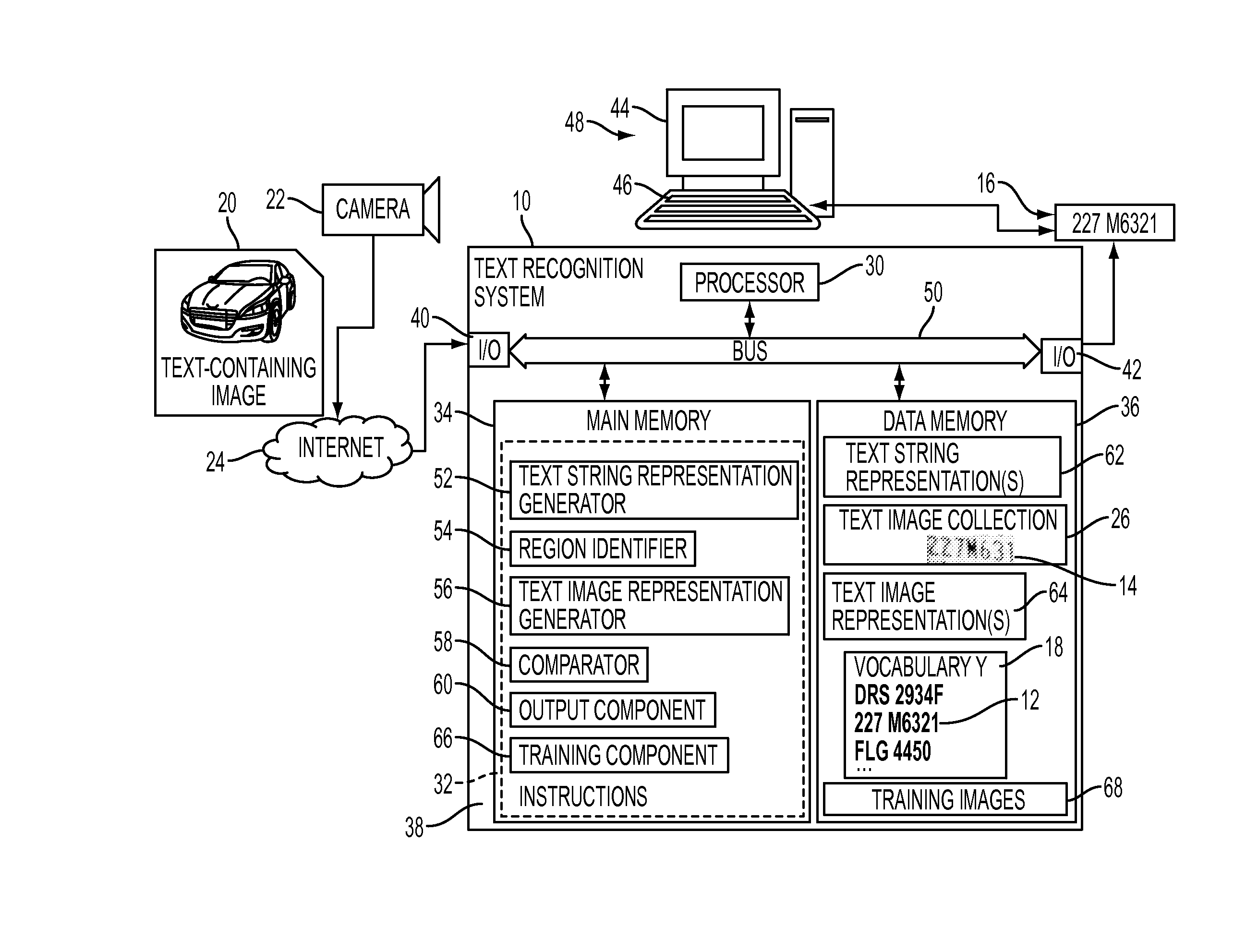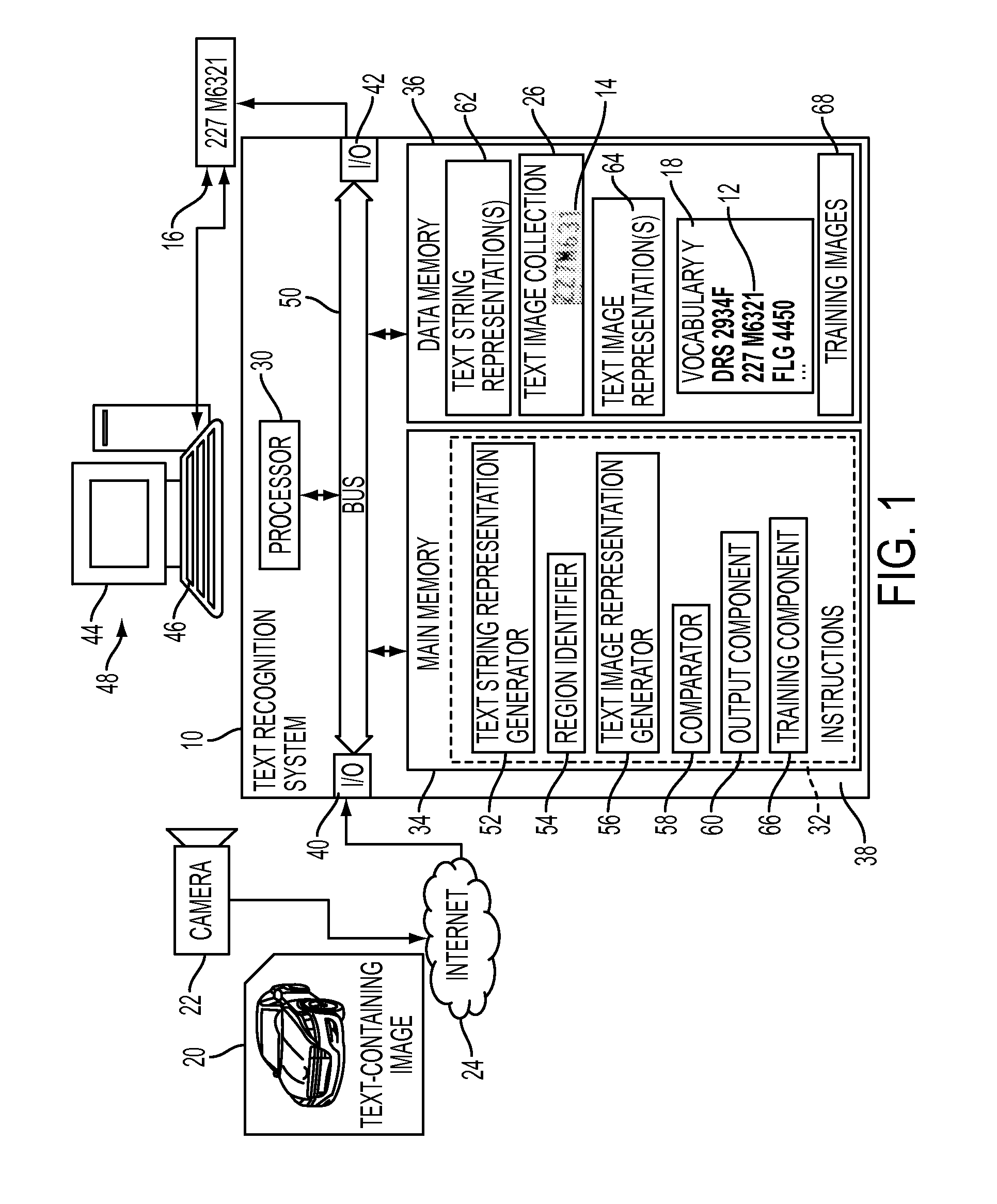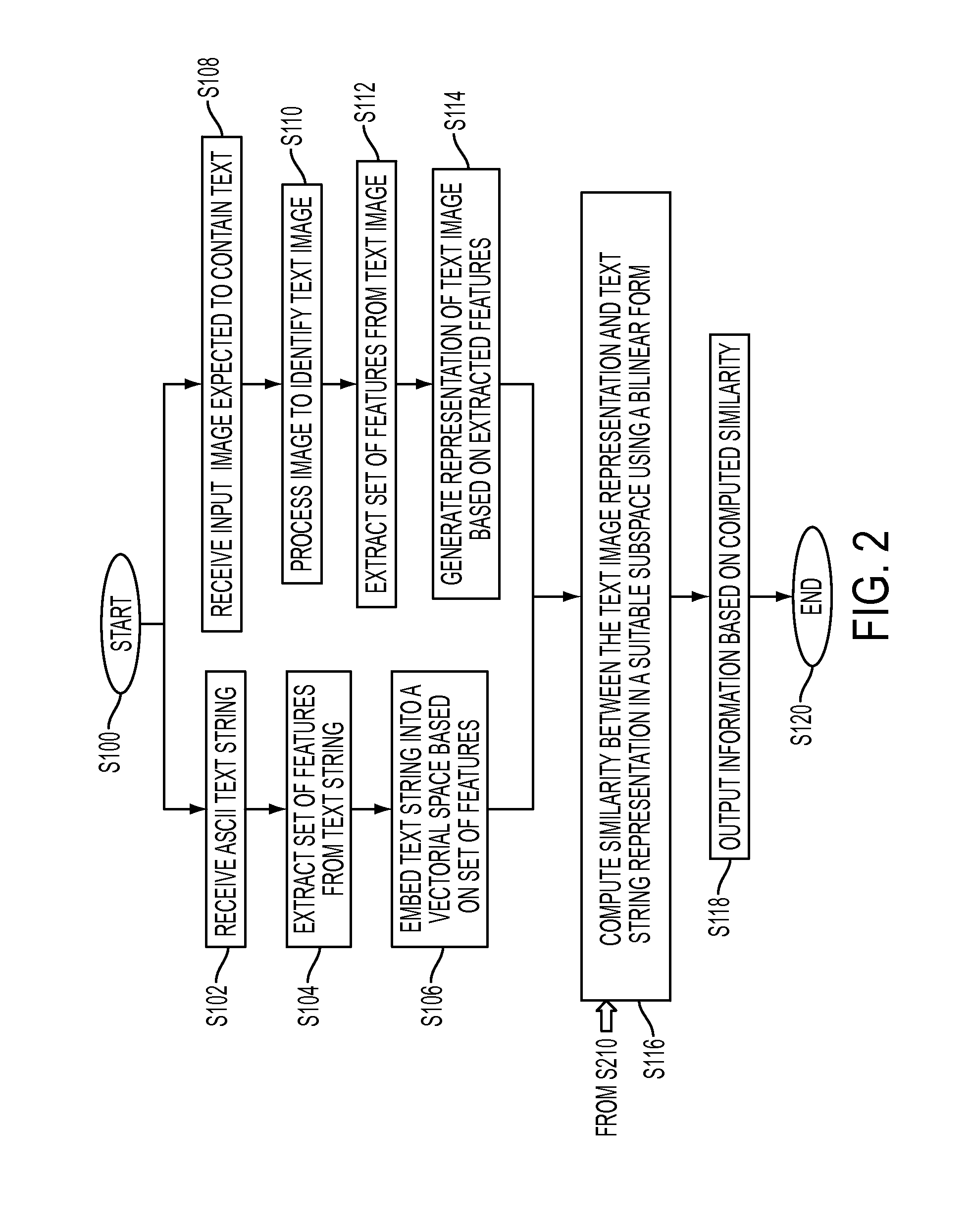Label-embedding for text recognition
a text recognition and label technology, applied in the field of text recognition in images, can solve the problems of inability to find a database, and inability to accurately identify objects,
- Summary
- Abstract
- Description
- Claims
- Application Information
AI Technical Summary
Benefits of technology
Problems solved by technology
Method used
Image
Examples
example 1
License Plate Annotation
[0128]In this example, the aim was license plate annotation: given an image of a license plate, the goal is to compute the most compatible label from a list of labels (see Eqn. (1)). The system was trained as explained in the Optimization section with image / label pairs from the training set, and was evaluated on images from the test set, where the argmax of Eq. (2) goes over the set of unique 5K labels of the test set.
[0129]The performance was measured in terms of top-1 accuracy by counting how many images are correctly matched with the true label (since the set of labels is known in advance for the test set). The value of the compatibility function F can be used as a confidence score to allow for a rejection mechanism. FIG. 7 shows the accuracy vs. reject characteristic of the proposed approach. The exemplary method was compared with two baselines: (i) a 1-nearest neighbor (1-NN) approach where for each test plate the label of the most similar training plate...
example 2
License Plate Retrieval
[0137]While the exemplary method can be used for annotation, it may be noted that the compatibility function F can also be used to perform retrieval / search: given a label, the goal is to find, in a dataset of images, a text image which matches the label.
[0138]The retrieval example is similar to the annotation example, but reversing labels and images at test time. In the example, the top-1 accuracy of retrieval is determined. For a baseline comparison, a system based on image retrieval is used: for each label, an image of that label is used as query and the most similar image is determined using the dot product between the respective Fisher vectors. A subset of the previous test set was used such that this is possible. The top-1 accuracy of the comparative image retrieval system is 93.3%, while accuracy with the present system is 96.1%. This demonstrates that the exemplary method is also a good method for retrieval.
[0139]In Eq. (5), it may be noted that θ(x)TW ...
PUM
 Login to View More
Login to View More Abstract
Description
Claims
Application Information
 Login to View More
Login to View More - R&D
- Intellectual Property
- Life Sciences
- Materials
- Tech Scout
- Unparalleled Data Quality
- Higher Quality Content
- 60% Fewer Hallucinations
Browse by: Latest US Patents, China's latest patents, Technical Efficacy Thesaurus, Application Domain, Technology Topic, Popular Technical Reports.
© 2025 PatSnap. All rights reserved.Legal|Privacy policy|Modern Slavery Act Transparency Statement|Sitemap|About US| Contact US: help@patsnap.com



